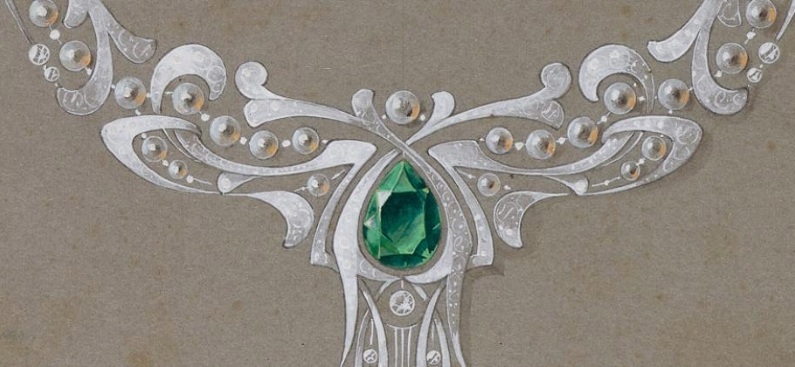The end of the 19th century was marked by the significant interest that artists worldwide showed in reinterpreting nature. This artistic reimagining gave rise to movements such as the Viennese Secession in Austria, Modernisme in Catalonia, and Art Nouveau in France, particularly in Europe. Art Nouveau, in particular, garnered enthusiasm from a diverse range of artists, including painters, sculptors, architects and those involved in decorative arts. Undoubtedly, one of the foremost figure of Art Nouveau, whose legacy endures to this day, was the Czech artist Alphonse Mucha, born on July 24, 1860. Mucha was the creator of numerous posters, with his portraits for actress Sarah Bernhardt standing out as global icons of art.
The Birth of a Poster Artist
Paris, Christmas of 1894. Alphonse Mucha was in the printing shop, proofreading some prints when suddenly a figure dressed in white walked into the establishment. Alphonse immediately recognized her; no introduction was needed: it was the renowned actress Sarah Bernhardt. The “Divine Sarah” was dissatisfied with the promotional posters for Gismonda, her latest theatrical production, and was in search of an artist to create ones more to her liking. It seemed that artist would be him. Alphonse, clearly a bit nervous, accepted the commission. However, he emerged triumphant from the challenge, crafting an innovative and groundbreaking poster for the actress that he hoped would please the diva. And indeed, it did. When she saw it, Bernhardt was absolutely thrilled. She liked the poster so much that she hired the artist for the next six years. In this way, Mucha transitioned from obscurity to taking charge of costume design and stage setting for Sarah Bernhardt’s company in the blink of an eye.
On January 1, 1895, that poster had already become a coveted collector’s item that everyone wanted to display in their homes. It was not uncommon to see people roaming the streets at night to tear them off the walls, and even the printing shop itself sold copies secretly until the diva discovered and put an end to the “business.” The Czech artist’s style bore no resemblance to that of another famous poster artist like Toulouse-Lautrec, and the poster Mucha created for Sarah Bernhardt, painted in pastel colors, transformed the actress into a kind of goddess: he elevated her on a pedestal and arranged her under an arch. From then on, Mucha’s posters became a true obsession for the people of Paris. “It was so well-received because it was visually refreshing, used colors in a different way, and elongated the figure, which was also dignified and very beautiful,” explains Japanese artist Tomoko Sato, curator of the Mucha Foundation since 2007 and an expert on his work.
While Mucha depicted Sarah Bernhardt on a pedestal, the women commonly featured in his work are characterized by their graceful femininity, flowing hair, elaborate clothing, and sinuous movements amidst nature. Mucha’s art, according to specialist Tomoko Sako, also “broke down the barriers between commercial art and high art.” Soon, businesses of all kinds sought the services of the renowned poster artist, who designed packaging for the famous Nestlé chocolate brand, advertising posters for the prestigious Moët-Chandon champagne brand, and promotions for Bières de la Meuse beer, originating from a region near the Orval Abbey. All of these promotional posters gained fame across Europe. Aware of the acclaim his work was receiving, Alphonse Mucha published a manual detailing the creative process behind seventy-two of his lithographs.
Mucha’s artistic pursuits extended beyond advertising posters to a unique form of art: jewelry. In 1899, collaborating with renowned French jeweler Georges Fouquet, Mucha designed a gold and enamel snake-shaped bracelet for actress Sarah Bernhardt. His passion for jewelry design is documented in his 1902 book, “Documents Decoratifs,” featuring intricate brooches with colored stone inlays.
In 1900, Fouquet commissioned Mucha to decorate the interior of his new jewelry store at 6 rue Royale in Paris. The result is considered the epitome of art nouveau decorative beauty. However, the flagship store opened at a time when artistic and decorative trends were evolving, leading to its eventual dismantling and later remodeling in a more traditional style. Fortunately, the original decor was preserved and can now be admired at the Carnavalet Museum in Paris.






